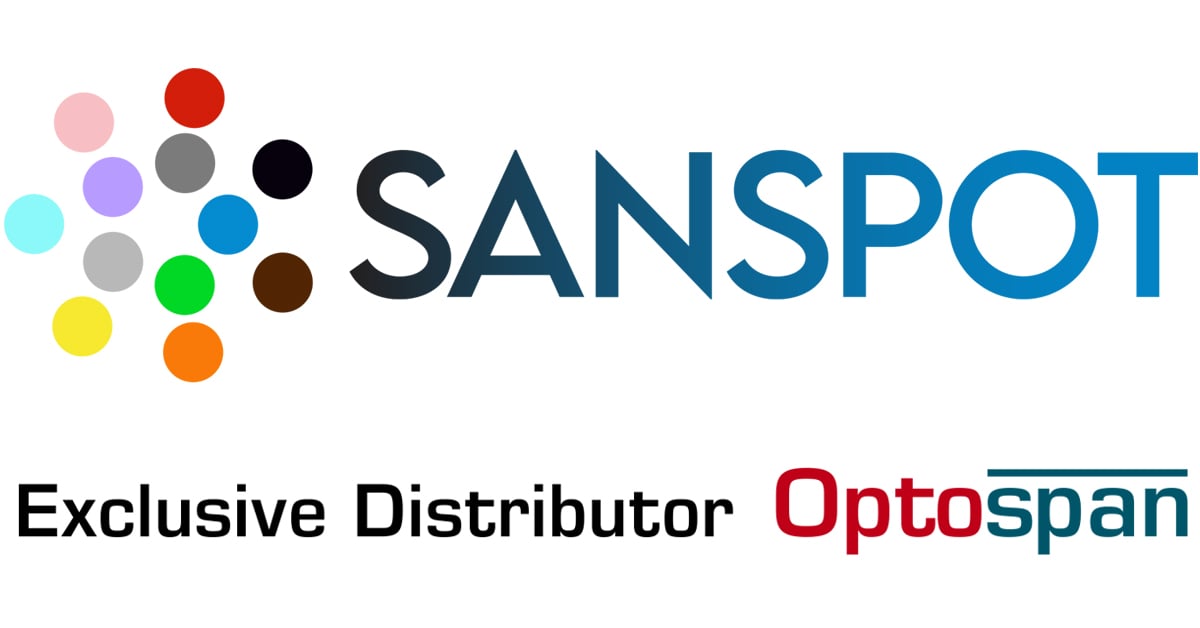LTO Guide
Introduction
LTO labels allow accurate and efficient identification of LTO tape cartridges by auto-loaders, tape libraries and IT staff. If usage of LTO media involves only a manually operated standalone tape drive and a few cartridges, handwritten or improvised printed labels may suffice. However, in most situations some degree of automation occurs through the use of tape libraries and backup software. In such cases, machine-readable LTO labels are needed to allow libraries to identify and handle cartridges.
SanSpot can help you manage your LTO media inventory through the use of high quality and highly customizable LTO labels designed and printed specifically to be used with LTO tape cartridges. This reference guide explains the aspects and features of the LTO label and shows how you can customize your labels to suit your backup and storage needs. Since this guide explores a vast array of customization alternatives, please not that not all options in the guide may be supported by your particular hardware and software environment.
The different parts of the LTO label are shown in Figure 1.
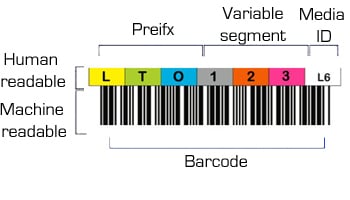
Figure 1. Parts of the LTO label.
Human Readable Section
The human readable section of the LTO label enables IT staff to identify tapes visually. Because tape libraries only read the machine readable section, the human readable section is where most of the label customization occurs. The human readable section is typically six characters long (not counting the media ID), but may be customized to be between one and twenty-five characters long. All the characters in the human readable section (including the media ID) are encoded into the machine readable section.
PrefixThis portion of the human readable section remains unchanged for a given batch of LTO labels. Only upper case alphabetic characters (A-Z) should be used. The prefix can be chosen to be anything that helps you identify a group of tapes, like the name of your company or the name of the department within your company. For example, the prefix "MKT" could be used for tapes that will be used to backup data from the marketing company, or the prefix "TUE" could be used for tapes that will be used for company-wide backups performed on Tuesdays. The prefix is typically zero to three characters long. It is perfectly acceptable not to use a prefix, as it is an optional parameter. The length of the prefix should not change that total length of the human readable section. For example, if the human readable section has the typical length of six characters (not counting the media ID_ and the prefix is two characters long, then the variable segment should be four characters long.
Variable SegmentThis portion of the human readable section has numeric characters (0-9) and is incremented with each printed label. Labels are typically incremented by one, but other increments may be specified. The length of the variable segment determines how many labels can be printed for a given batch of LTO labels. For example, if the variable segment is two characters long, no more than 100 labels may be printed per batch if duplicate labels are to be avoided.
SuffixThe suffix has the same characteristics as the prefix, except that the suffix is placed between the variable segment and the media ID. The use of a suffix is not typical.
Media IDThe media ID allows tape libraries to identify the cartridge type. Table 1 shows the media ID parameters that are typically used.
| Media ID | Cartridge Type | Native Capacity |
|---|---|---|
| L1 | LTO-1 | 100GB |
| L2 | LTO-2 | 200GB |
| L3 | LTO-3 | 400GB |
| L4 | LTO-4 | 800GB |
| L5 | LTO-5 | 1.5TB |
| L6 | LTO-6 | 2.5TB |
| L7 | LTO-7 | 15TB |
Table 1. Typical media ID paramters.
Machine Readable Section
The machine readable section of an LTO label allows tape libraries to identify and handle cartridge. It is the only part of the LTO label that tape labels read. The machine readable section consists of a barcode that as the same exact data as the human readable section (including the media ID). Said data is encoded using the Code 39 standard.
Barcode Orientation
Although the bottom barcode orientation is typically used, it is also possible in most cases to choose other barcodes orientations. The available barcode orientations are show in in Figures 2 to 5.
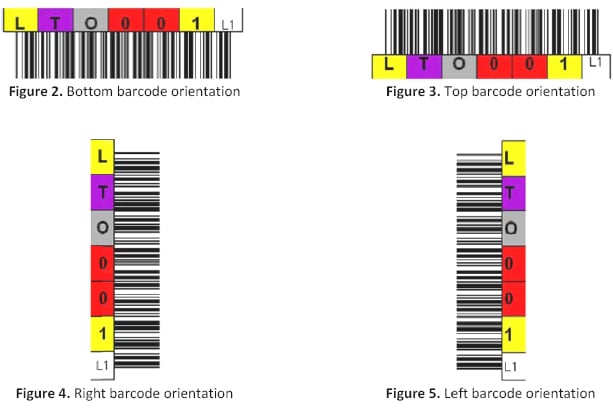
Color Palettes
The term "color palette" is used to refer to the color scheme used for the characters of the human readable section of the LTO labels. This includes the color of the font and the color of the background. The same color is always used for a given character, although said color may not be unique. Note that color palettes are only for human identification and do not affect machine nonrecognition, since the human readable section is not read by tape libraries. SanSpot offers three predefined color palettes: hot, warm and cool, as shown in Figures 6 to 8. The hot color palette is typically used. Custom color palettes may also be specified.
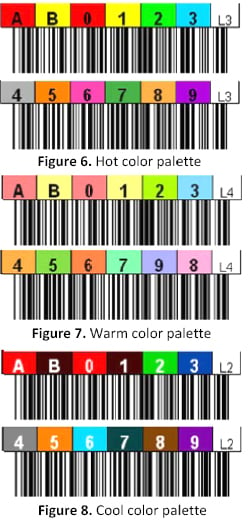
Cartridge Types
There are three types of LTO Cartridges:
- Data: used for storing useful data. All information provided up to this point in the guide refers to data cartridges. An example of a data label is shown in Figure 9.
- Cleaning: used for cleaning the magnetic read/write heads of a tape drive. Typically, the prefix is CLN, the media ID is CU ("Cleaning Universal") and the color palette is black font with white background. An example of a cleaning label is shown in Figure 10.
- Diagnostic: used for tape drive testing by some libraries. Typically, the prefix is DG with a blank space after the "G". the media ID is as in data cartridges and the color palette is white font with a black background. An example of a diagnostic label is shown in Figure 11.
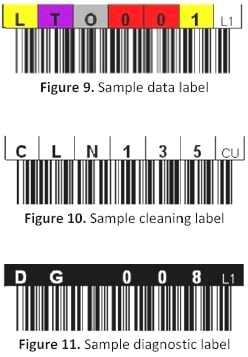
Label Templates
Most tape libraries are compatible with the label template shown in Figure 12. Some libraries, however, require or accept other label templates. The label templates offered by SanSpot are shown in Figures 12 to 19. Table 2 shows which tape libraries might support each label template (Compatibility depends on exact library model). When you provide the brand and the model of your tape library, SanSpot selects the right label template for you. It is also possible for you to explicitly designate the label template to meet your needs.
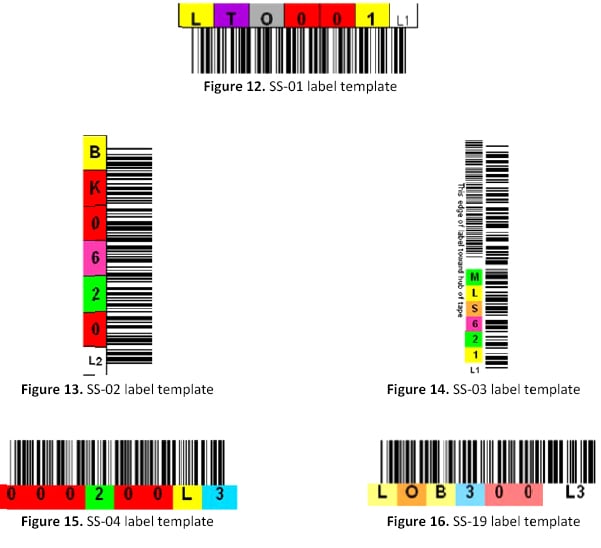
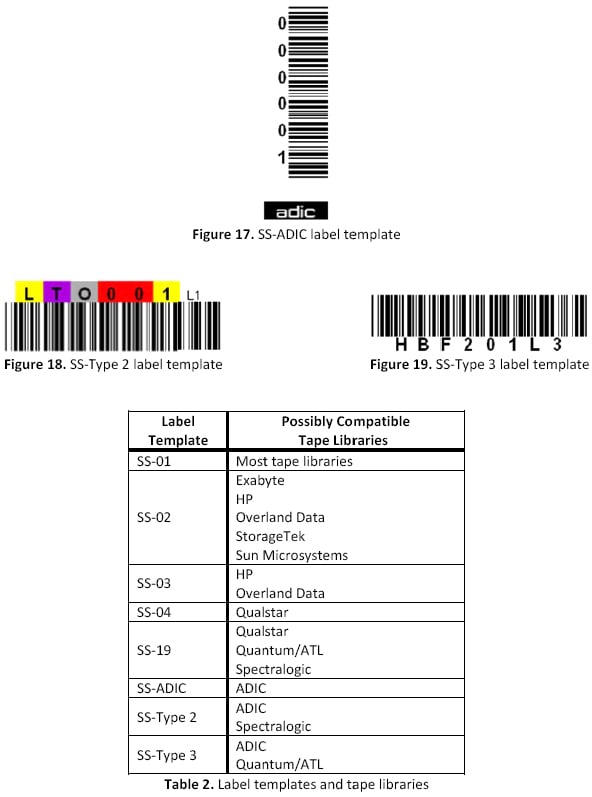
Summary
Available customization options and typical configurations are summarized in Table 3.
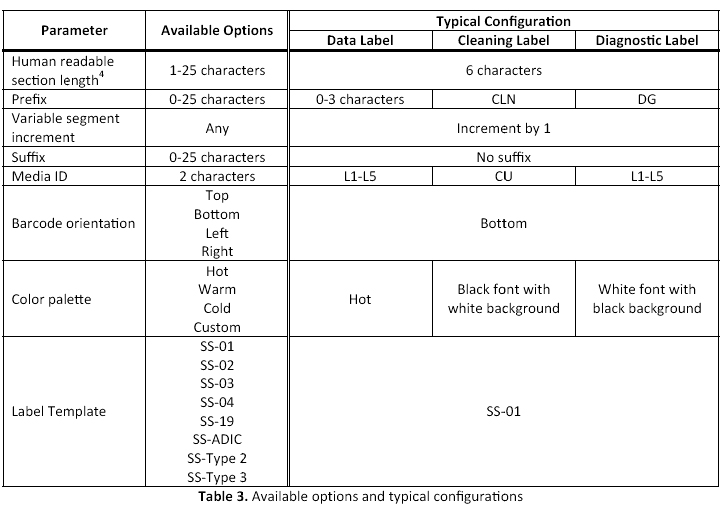
Order customized LTO Labels Today!
Download the LTO tape label and media reference guide.
